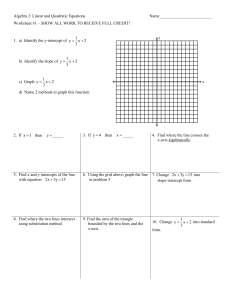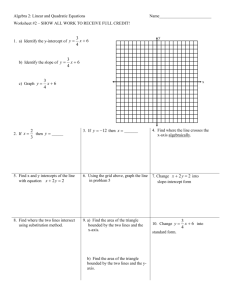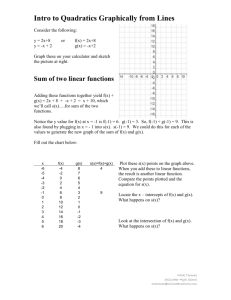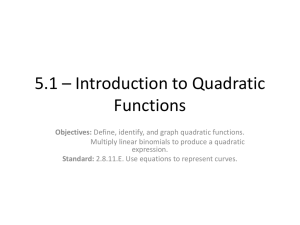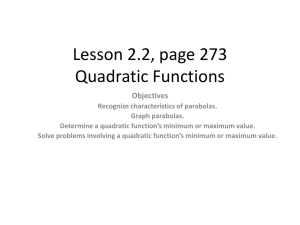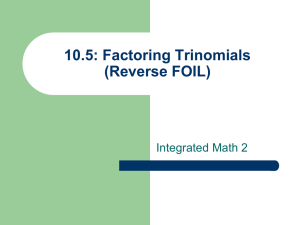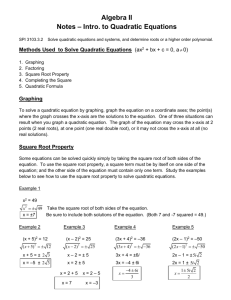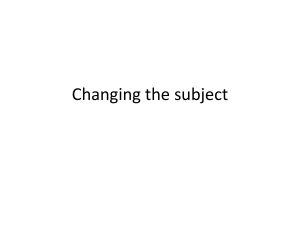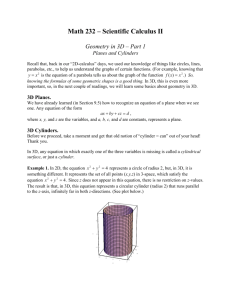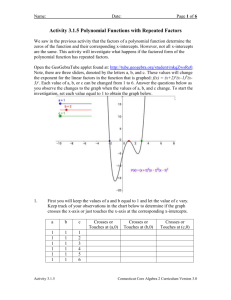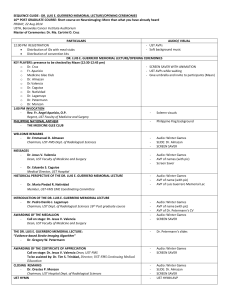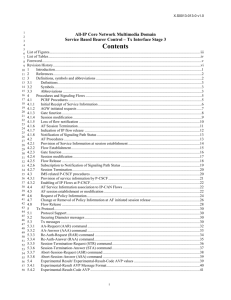Worksheet on relating the graph of a quadratic function to its
advertisement
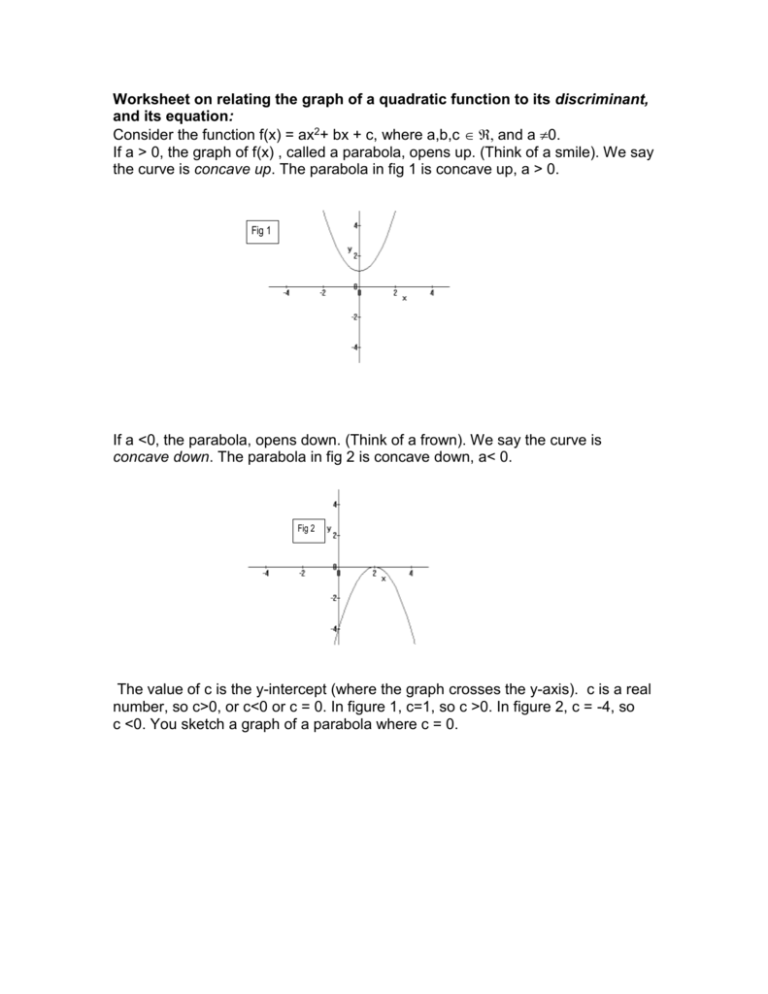
Worksheet on relating the graph of a quadratic function to its discriminant, and its equation: Consider the function f(x) = ax2+ bx + c, where a,b,c and a 0. If a > 0, the graph of f(x) , called a parabola, opens up. (Think of a smile). We say the curve is concave up. The parabola in fig 1 is concave up, a > 0. Fig 1 If a <0, the parabola, opens down. (Think of a frown). We say the curve is concave down. The parabola in fig 2 is concave down, a< 0. Fig 2 The value of c is the y-intercept (where the graph crosses the y-axis). c is a real number, so c>0, or c<0 or c = 0. In figure 1, c=1, so c >0. In figure 2, c = -4, so c <0. You sketch a graph of a parabola where c = 0. When we use the quadratic formula to solve quadratic equations, we need to calculate the number inside the square root. This number, b 2 - 4ac, has a special name. It is called the discriminant. Let D = b2 - 4ac. Then D is a real number, and therefore the value of D has three possibilities: Case 1: D > 0. Then the number inside the square root is positive, and there are 2 real solutions to the equation ax2+ bx + c = 0. This means the graph of f(x) = ax2 + bx + c will cross the x-axis in 2 places. In figure 3, the graph crosses the x-axis at x = 1 and x = -3, (crosses in 2 places) so D > 0. Fig 3 Case 2: D < 0. Then the number inside the square root is negative, and there are 2 complex solutions to the equation ax2+ bx + c = 0. This means the graph of f(x) = ax2 + bx + c will never cross the x-axis . In figure 1, the graph never crosses the x-axis, so D < 0. Fig 1 Case 3: D= 0. Then the number inside the square root is 0, and there is only one real solution to the equation ax2+ bx + c = 0. This means the graph of f(x) = ax2 + bx + c will touch the x-axis in only one point, which is the b 0 b location of the vertex of the parabola, x . 2a 2a In figure 2, the graph touches the x-axis at the vertex, x =2, so D = 0. Fig2 By inspection, for each of the following graphs determine the following: a >0 or a < 0 D > 0, D < 0 or D = 0 Example: For the graph depicted in figure 4, we have c > 0, c <0, or c = 0 a< 0, D> 0 and c > 0 Fig 4 #2 a D c #1. a D c #4 a D c #5 a D c #3 a D c #6 a D c
